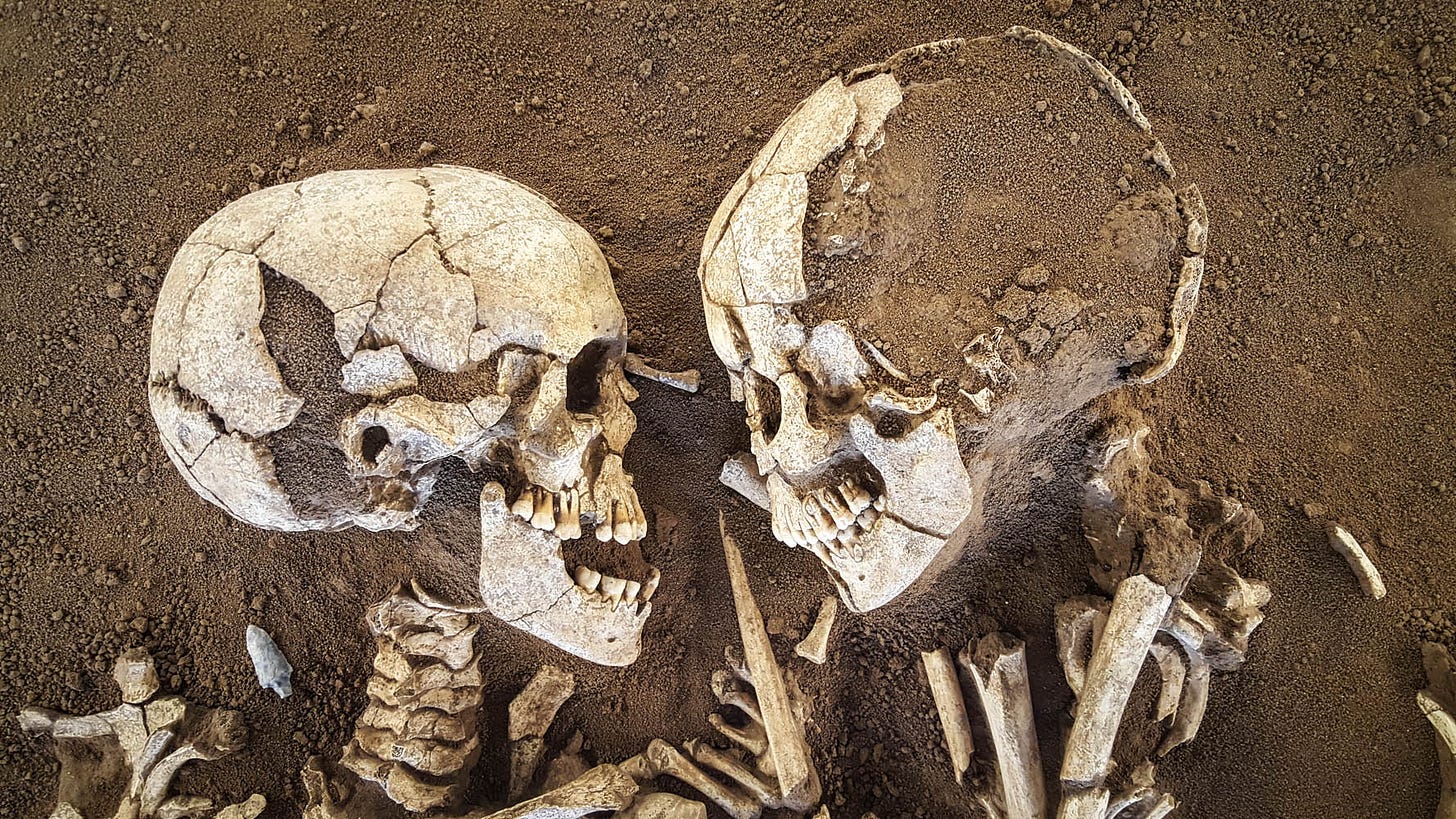April is National Poetry Month! I aim to post a poem each weekday in celebration of the form. Some old, some new, some published, some never before seen.
A few years ago, my brilliant writing coach encouraged me to enter an Instagram poetry contest. The theme of the contest was L-O-V-E, love. This was a proper challenge. Writing love poetry is not a natural fit for me (though I’m a sucker for a good one). My poetry tends to highlight modern-day observances: the unhoused, the working stiff, abandoned furniture, etc.
As I thought about ways to approach the theme of love without falling into a sappy, clichéd “roses are red, violets are blue” toilet bowl, I recalled a photo I had once seen in Smithsonian Magazine. The pic was from an archaeological dig in modern-day Iran and showed two skeletons facing each other inside a single tomb. It’s not an isolated practice. The more I looked into this custom—which scientists call bisōma (literally “two bodies”)—the more widespread I discovered it is: from ancient Greece, circa 4000 BCE to Wei Dynasty China in 500 CE. The photos are haunting and touching, and perfectly conveyed the theme of love.
Like the archaeologists who discovered these skeletons, I found myself obsessing over them. What drove these people to this, their final resting place? Who were they to each other? What is poetry for, if not to explain what science cannot?
I submitted this poem to that Instagram contest, but didn’t even crack into the long-list. A few months later, I submitted it to the prestigious Hal Prize out of Door County, Wisconsin, where it earned an honorable mention and “publication” in the local journal, 8142 Review [unfortunately, the journal folded shortly following my selection, so the poem never actually made it to print]. Nonetheless, I give you here the poem in its entirety:








Thank you for sharing, @Lyns McCracken !